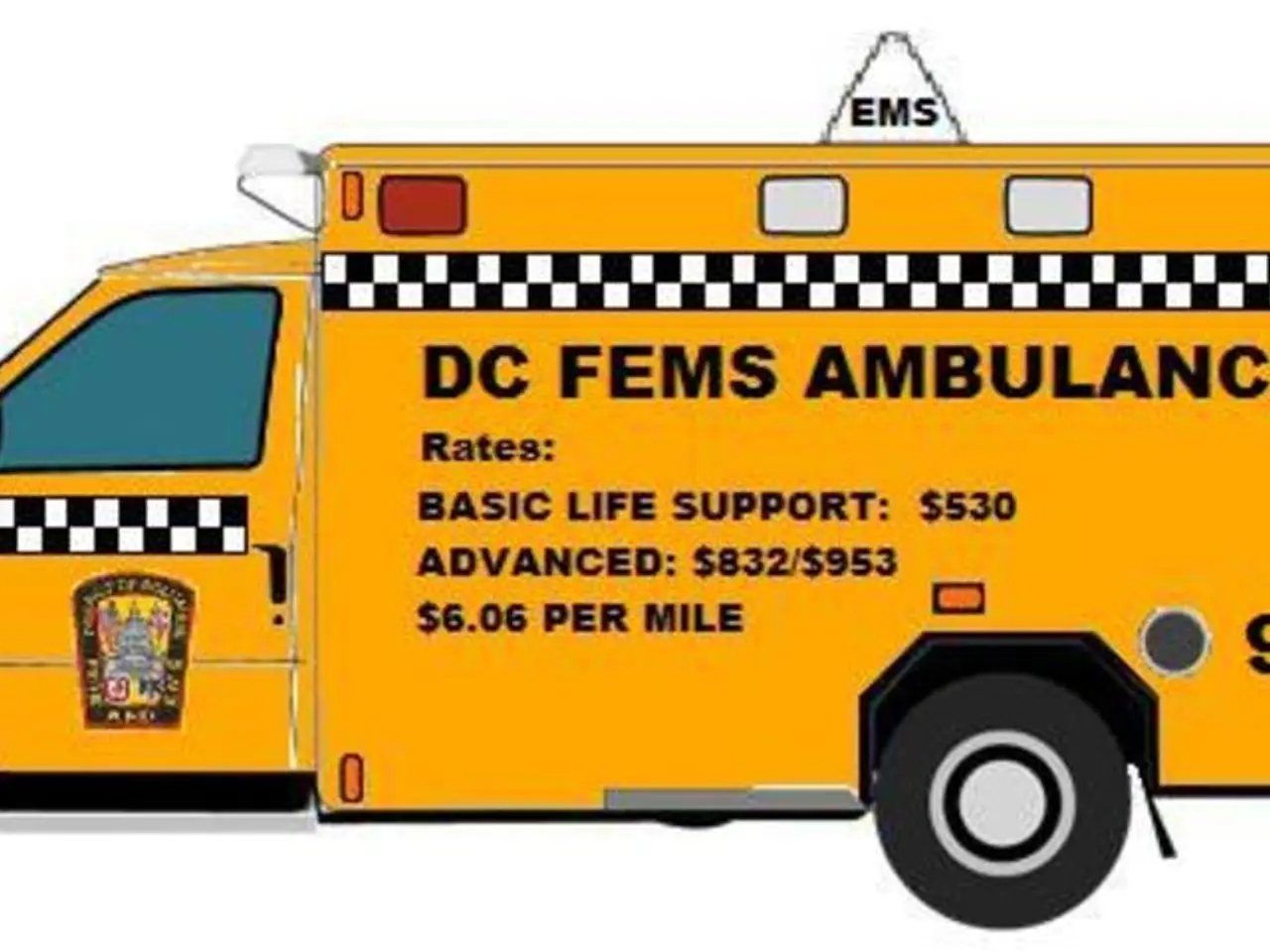Immediate attention required for heart attack treatment
In the event of a heart attack, quick action is crucial for favorable outcomes. This article provides an overview of the emergency care procedures, treatment, and recovery process for those experiencing a heart attack.
Recognizing the Signs
Common symptoms of a heart attack include chest pain or discomfort, often described as pressure, squeezing, tightness, or fullness lasting more than a few minutes or coming and going. This pain may radiate to the shoulders, arms (especially the left arm), neck, jaw, or back. Other frequent signs are shortness of breath, which can occur with or without chest pain; nausea, vomiting, or cold sweats; lightheadedness or dizziness; and unusual fatigue. Some people, especially women, may experience subtler symptoms such as anxiety, sleep disturbance, fainting, or mild chest discomfort instead of sharp pain [1][2][3][5].
Emergency Care Procedures
Upon arrival at the hospital, healthcare providers promptly evaluate vital signs, oxygen levels, and symptoms. An electrocardiogram (ECG or EKG) is performed to confirm the diagnosis by detecting changes in heart rhythm and signs of blocked coronary arteries. Blood tests are taken to measure cardiac enzymes (like troponin) that indicate heart muscle damage. If oxygen levels are low, oxygen therapy is administered [2].
Medications are often given immediately, such as aspirin to inhibit blood clotting, nitroglycerin to relieve chest pain, beta-blockers, or anticoagulants. If a blockage is confirmed, treatments to reopen the blocked artery are initiated quickly. This may involve percutaneous coronary intervention (PCI), a catheter-based procedure, usually angioplasty with stent placement, to open the obstructed coronary artery. In some cases, thrombolytic (clot-busting) therapy is used when PCI is unavailable promptly [2].
Continuous cardiac monitoring is essential for arrhythmias and complications. Supportive care and further evaluation, including echocardiograms, are provided to plan for cardiac rehabilitation after stabilization. Emergency medical services (EMS) activation by calling 911 is critical, as they can begin initial treatment during transport and expedite hospital care [2].
Post-Heart Attack Recovery
The initial phase of heart attack recovery focuses on stabilizing the heart, managing symptoms, and preventing further complications. Medications may include blood thinners, pain relievers, beta-blockers, and high-intensity statins. High-intensity statins are also commonly prescribed to manage cholesterol [1].
In the long term, recovery also involves regular medical checkups and managing risk factors, such as high blood pressure, high cholesterol, diabetes, and smoking. With proper treatment, support, and lifestyle changes, individuals can optimize their heart health and reduce the risk of future cardiac events. The recovery process involves personalized care, lifestyle modifications, and ongoing management of risk factors [4].
In Conclusion
Recognizing common and subtle heart attack symptoms—especially chest pain or discomfort and shortness of breath—and seeking immediate emergency care are vital for survival and minimizing heart damage. Hospitals rapidly diagnose and treat suspected heart attacks using ECG, blood tests, medications, and procedures to restore blood flow to the heart [1][2][3][4][5]. If a person experiences persistent chest pain or discomfort and medical professionals have ruled out a heart attack, they should contact a primary care doctor for further evaluation. Many people who experience a heart attack can live normal lives, with many returning to work within a certain period. With the right care and lifestyle changes, heart attack survivors can manage their condition and reduce the risk of future cardiac events.
References
[1] American Heart Association. (2020). Symptoms of a Heart Attack. [online] Available at: https://www.heart.org/en/health-topics/heart-attack/symptoms-of-a-heart-attack
[2] Mayo Clinic. (2021). Heart Attack. [online] Available at: https://www.mayoclinic.org/diseases-conditions/heart-attack/diagnosis-treatment/drc-20372616
[3] National Health Service (NHS). (2021). Heart Attack. [online] Available at: https://www.nhs.uk/conditions/heart-attack/
[4] American Heart Association. (2020). Life After a Heart Attack. [online] Available at: https://www.heart.org/en/health-topics/heart-attack/life-after-a-heart-attack
[5] American Heart Association. (2021). Women and Heart Disease. [online] Available at: https://www.heart.org/en/health-topics/heart-attack/women-and-heart-disease
- Recognizing subtle symptoms such as anxiety, sleep disturbance, and mild chest discomfort, in addition to more common signs of a heart attack, is essential for women.
- For breast cancer patients, therapies and treatments may vary based on the stage of the disease, and receiving medical care is crucial to manage the condition effectively.3.chronic-kidney-disease, chronic-diseases, and cancer may lead to a higher risk of cardiovascular health issues, making it essential to manage such conditions and seek regular medical evaluations.
- While heart attacks are primarily associated with cardiovascular health, mental health also plays a vital role in recovery, considering the potential psychological effects of a heart attack on an individual.
- In the realm of health and wellness, CBD has gained attention for its potential benefits, including reduced anxiety and pain management, although further research is needed to evaluate its efficacy for various medical conditions.
- In the event of experiencing chronic pain, medical-conditions, or managing chronic diseases, seeking continuous and personalized care is essential for maintaining one's health and quality of life.
- A holistic approach to health and wellness, encompassing exercise, nutrition, stress management, and continuing medical education on conditions like heart attacks, can empower individuals to make informed choices and improve overall well-being.




